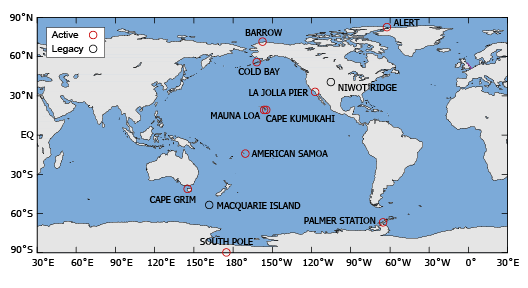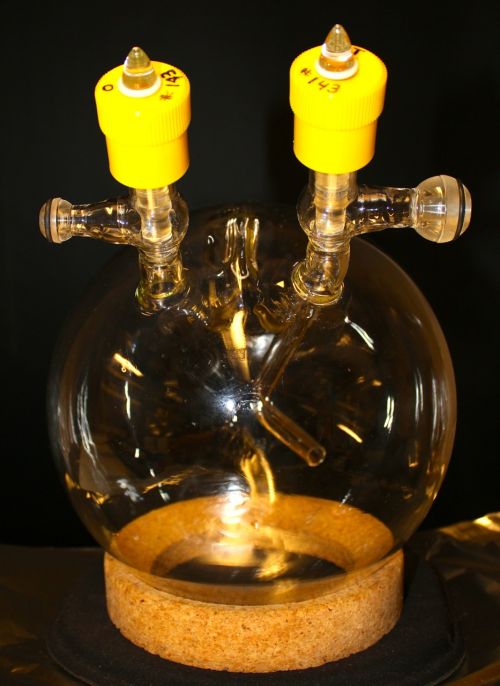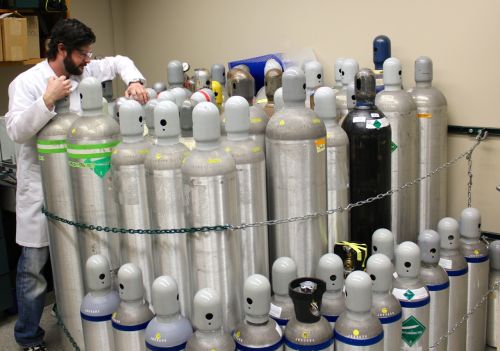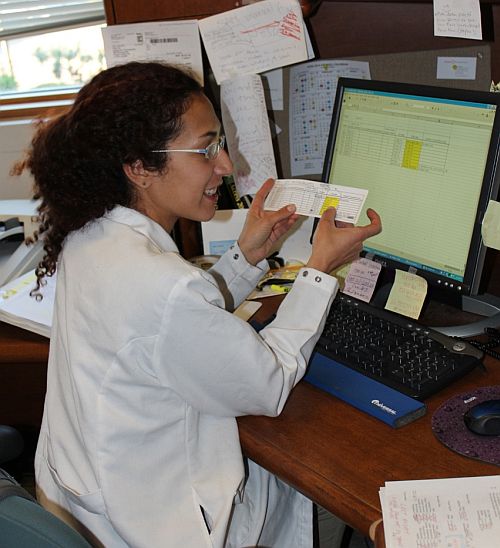What We Do

The Scripps O2 program collects air in flasks from a global network of 9 stations to precisely quantify changes in atmospheric oxygen.
We analyze the air sampled in the flasks at our lab at Scripps using an Interferometer and a Mass Spectrometer. We reference the O2 concentrations to multiple calibration gases to ensure the records are consistent over time.

Follow an O2 Sample Flask
To illustrate the effort required to maintain the O2 program, we will follow an individual sample flask as it travels from Scripps to a field station and returns for analysis. Flask # 143, which we will call Aerial, is shown here. Aerial is designed to sample uncontaminated air via a dual valve flow through system and contains a stir bar to enable mixing of the sampled air during analyses.

Follow a Calibration Gas >>
The reliable calibration of the O2 record over many decades is vital to the integrity of the O2 research program. We insure this calibration by preparing and analyzing a formidable suite of calibration (cal) gases, contained in aluminum or steel tanks at our facility.

Follow the Data >>
The final step is to ensure that the O2 measurements are consistent over time and to provide the results and various cross checks on quality. This requires that we actively maintain databases for samples and alibration gases.
